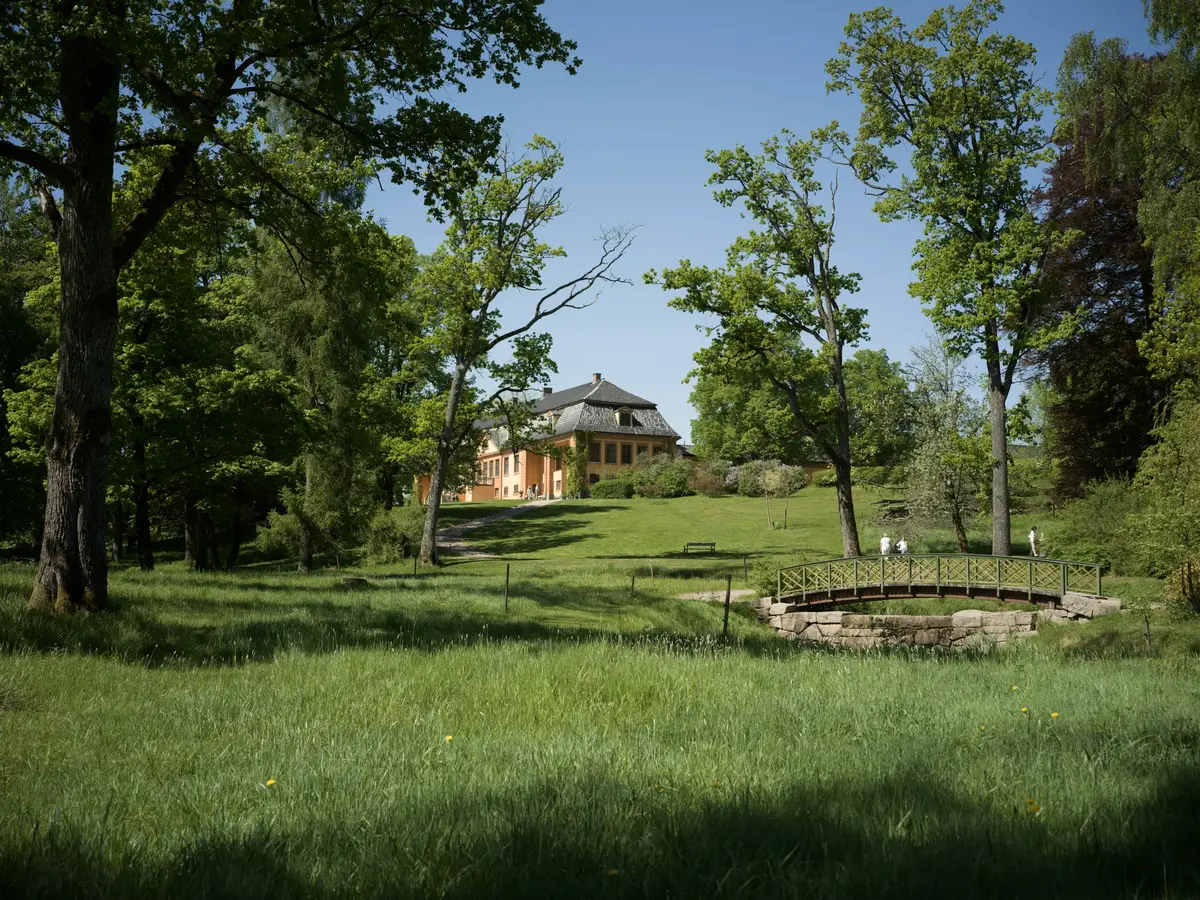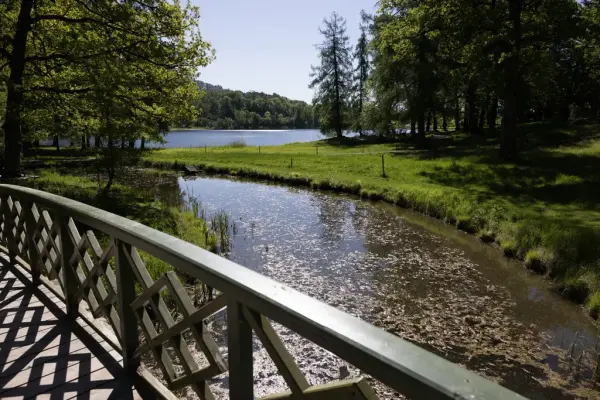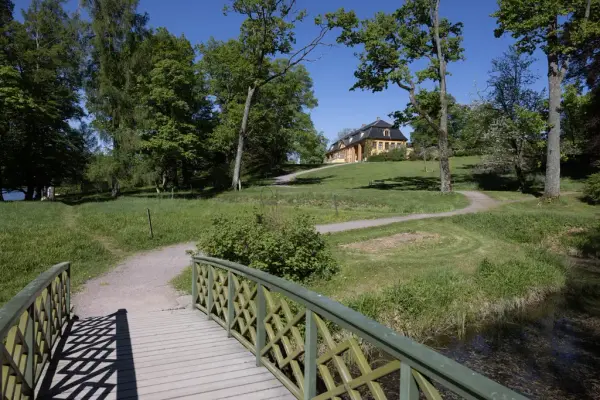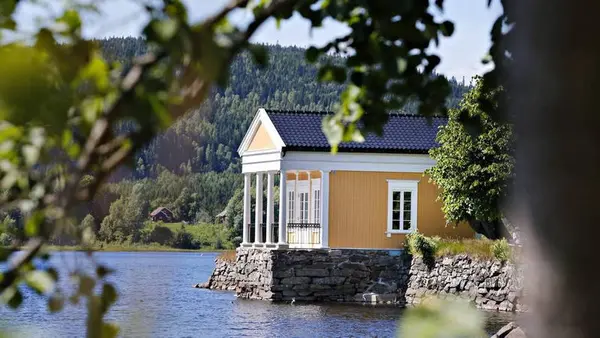The park at Bogstad Manor retains a stylistic and historical continuity from the mid-1700s. In conjunction with Morten and Mathia Leuch's construction of a Baroque main building around 1760, a formal garden aligned with the facade of the house was also established on the front side overlooking Bogstadvannet.
This was a terraced, symmetrical layout with neatly clipped bushes and trees. It's often referred to as a "French garden," and traces of it are still evident in the landscape.
The English landscape park was created by Peder Anker in the 1780s, extending eastward towards the peninsula.
As the name suggests, the inspiration primarily came from England. Anker sent his German gardener, Johan Reinholdt Grauer, to Kew Gardens in London to learn about the new gardening culture.
Such a park was meant to be romantic and offer surprises in the form of cascades, bridges, carp ponds, large trees, and winding paths, completely devoid of the symmetry prevalent in the Baroque garden layout. Many foreign trees and plants were introduced, and the park served as a model for numerous installations in Norway.
The park played an important role for the estate owners, serving as a pantry, event venue, laboratory, gardening school, and as a research arena for experimenting with new tree species and plant varieties.
Guests from home and abroad came to Bogstad to see, admire, and learn. The park was exceptional and was proposed at one time as a potential site for the university's botanical garden, before it was ultimately established at Tøyen.
- 1/4
Christian Andre Strand - 2/4
Christian Andre Strand - 3/4
Christian Andre Strand - 4/4
- 1/1
Lars Erling Mikkelsen





